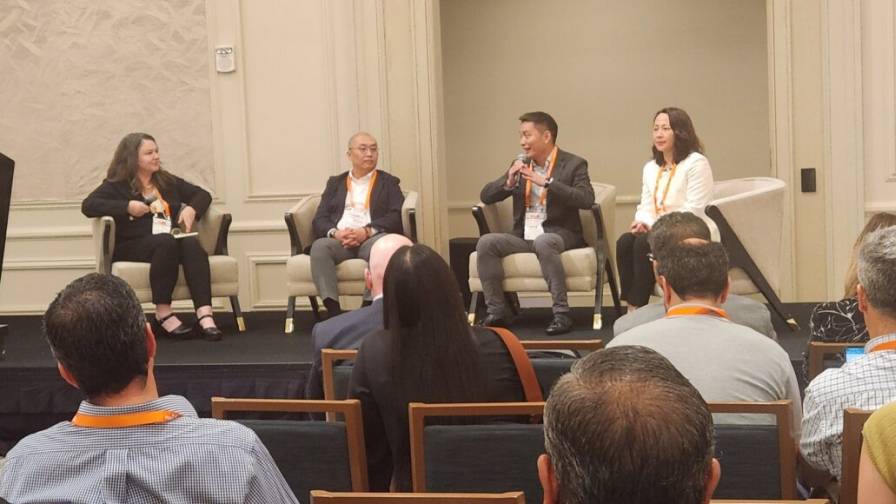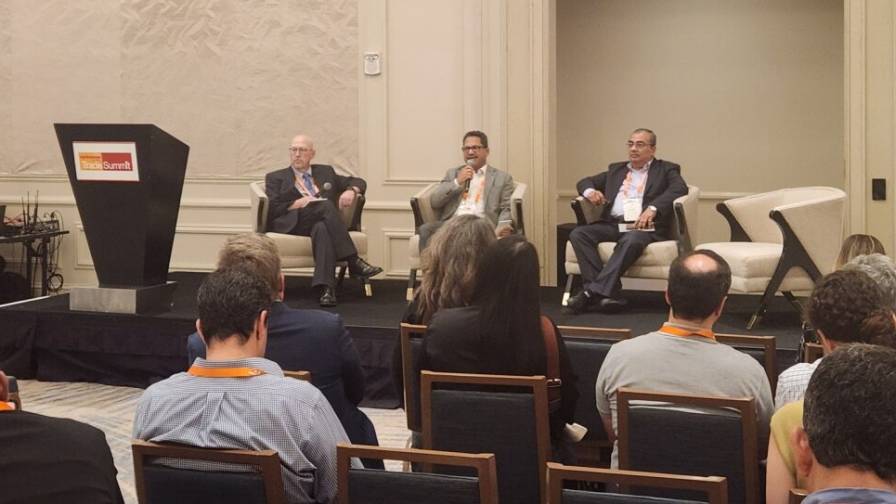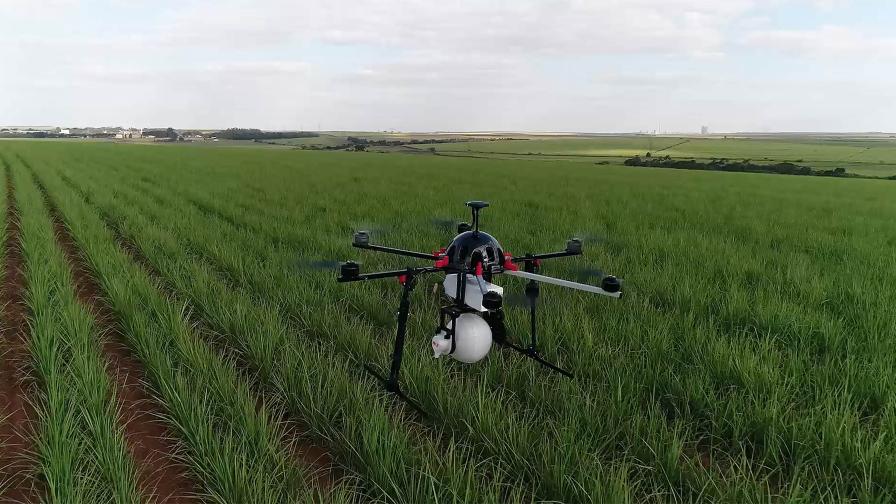China Agrochemical Supply, Regulatory Harmonization Among Key Topics Discussed at Trade Summit

From left: AgriBusiness Global Editor Renee Targos moderates the session “China Update: Foresight of China Agrochemical Supply,” which featured David Li, Marketing Director, SPM Biosciences; Norman Wu, Commercial Vice President, CAC Nantong Chemical Co., Ltd; and Adrienne Chang, General Manager, International Business, Sino-Agri Leading Biosciences, Ltd., Co.
The AgriBusiness Global Trade Summit — held 9-10 August in Aventura, FL, U.S. — continued to deliver cutting education along with an opportunity for buyers and sellers of crop inputs to make deals. In the midst of the show floor a standing room-only crowd listened to three insightful sessions illuminating the opportunities and challenges facing the industry.
Kicking off the session on 9 August, AgriBusiness Global Editor Renee Targos shared the stage with three leading China experts focusing on the country’s agchem future. The session “China Update: Foresight of China Agrochemical Supply” featured David Li, Marketing Director, SPM Biosciences; Norman Wu, Commercial Vice President, CAC Nantong Chemical Co., Ltd; and Adrienne Chang, General Manager, International Business, Sino-Agri Leading Biosciences, Ltd., Co.
“China has the (most) complete, integrated production lines in the world in terms of production capability. And in the future, China will have a stable and sustainable in the whole world for agriculture,” Chang said.
While the country is on the path toward that end goal, it must deal with immediate challenges following the supply issues posed by a years’ long pandemic. Chinese manufacturers are learning to navigate the post-COVID-19 era but are learning to deal with huge stockpiles throughout the supply chain.
“The first half of 2023 was quite abnormal. Chinese suppliers reduced output because of high inventories in the different layers throughout the supply chain,” Wu says.
Li agrees the start to 2023 was challenging.
“We are facing very tough situations,” says Li, who also writes the China Price Index column for AgriBusiness Global.
Insights Into India

From left: AgriBusiness Global Senior Editor Dan Jacobs moderates the session “India Update: Expansion, Backward Integration, and Ag Tech,” which featured Abhijit Bose, Chief Marketing Officer, Tagros Chemicals India Pvt Ltd. and Narayanan Nair, Head of Intl. Sales & Marketing, Gharda Chemicals Limited.
The following session, “India Update: Expansion, Backward Integration, and Ag Tech” featured Abhijit Bose, Chief Marketing Officer, Tagros Chemicals India Pvt Ltd. and Narayanan Nair, Head of Intl. Sales & Marketing, Gharda Chemicals Limited and was moderated by AgriBusiness Global Senior Editor, Dan Jacobs.
While much of the world view China and India as competitors for the crop inputs market, Bose and Nair recognize that each country has its strengths and view any competition as a healthy way for both countries to prosper.
“Today, in terms of manufacturing, China is the largest manufacturer petrochemical in the world. India has emerged as the second largest exporter of petrochemicals in the world in the last 20 years, moving up from sixth place,: Bose said. “China and India coexist as the number one and number two manufacturers and exporters to the rest of the world.”
Nair agrees.
“It’s not a competition,” he says. “China has its own strengths.” Nair went on to highlight India’s advances and the technological capabilities of the countries manufacturing segment.
A Regulatory Update
Targos returned to the stage to moderate the day’s final session, “Global Reformation of Regulation” and featured Dr. Piyatida Pukclai, Regulatory Policy Manager, Knoell; Alexandre Quesada, Executive Director/CEO, SmartTox Consulting Company; and Robert Kiefer, General Manager, REACH24H USA Inc.
As is often the case with these presentations, Targos met with the panel discussion to discuss a variety of topics, one of which was the state of harmonization among regulatory agencies.
“At least from a harmonization standpoint, there’s not a lot of progress, with the exception of maximum residue limits,” Kiefer said. When it comes to the registration process in the U.S., the registration process is governed by the Pesticide Registration Improvement Act of 2022 (PRIA 5), which updated pesticide registration service fee tables in FIFRA Section 33(b)(3)(B). In February of this year the EPA’s PRIA website updated fee tables, primary/secondary related applications guidance, and fee reduction and refund formula information. PRIA 5 also codified the timeline for registrations, Kiefer said.
That part of the conversation was rather quick. Simply put, harmonization isn’t happening, so the discussion quickly moved to how various regulatory agencies are working to speed up the registration process globally. China, Kiefer says, takes a different approach.
If the Chinese government could accept OECD reports (The Organization for Economic Cooperation and Development), it would significantly reduce testing time for foreign companies,” Kiefer continues. “However, at the present, Chinese authorities they do not recognize OECD GLP reports and they still have a long way to go.”
Whether it’s a biological or traditional pesticide every regulatory agency requires a variety of information including toxicity assessments and efficacy trials. Different countries require a different number of trials, said Pukclai, who focuses on Southeast Asia.
Finally, the trio discussed the cost of registering products in various countries around the world, which anyone involved in the process knows can vary greatly from thousands to tens of thousands of dollars.






